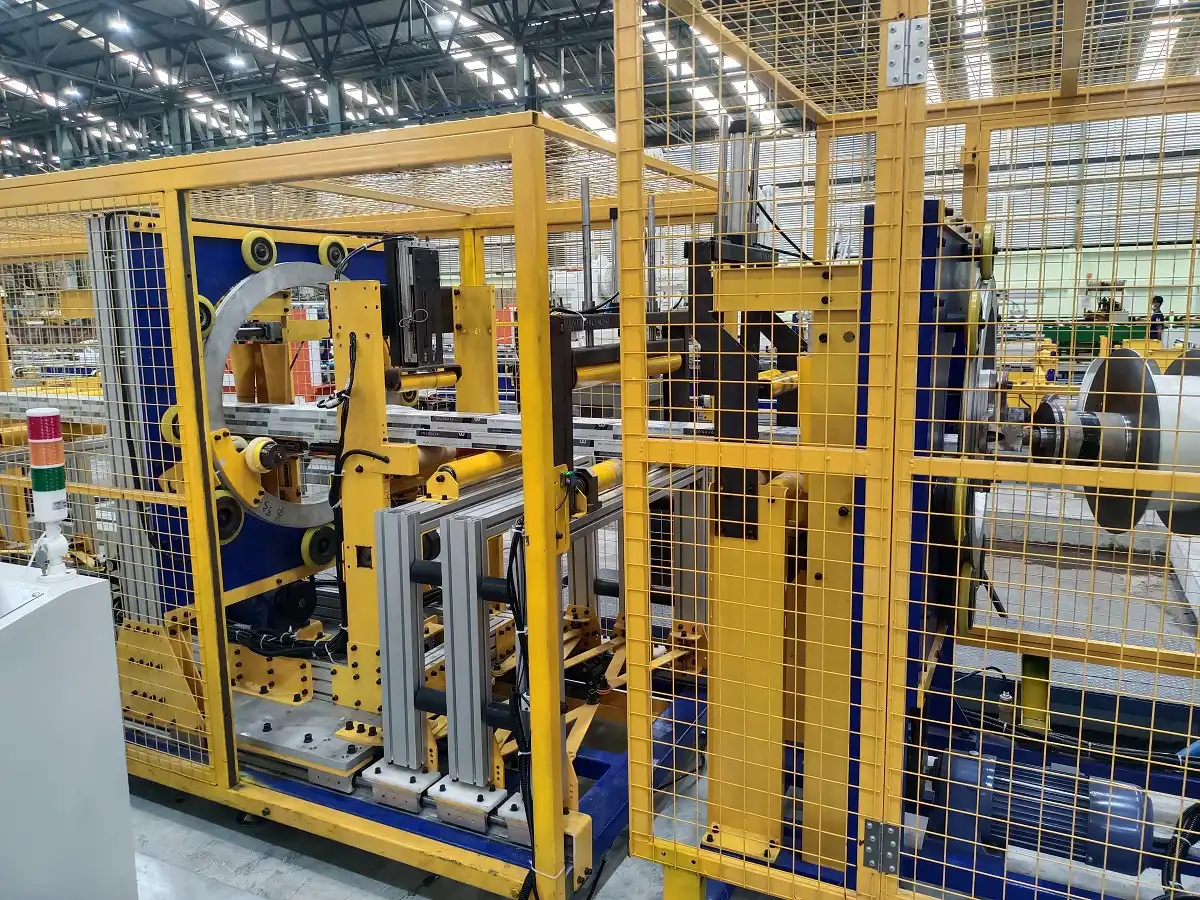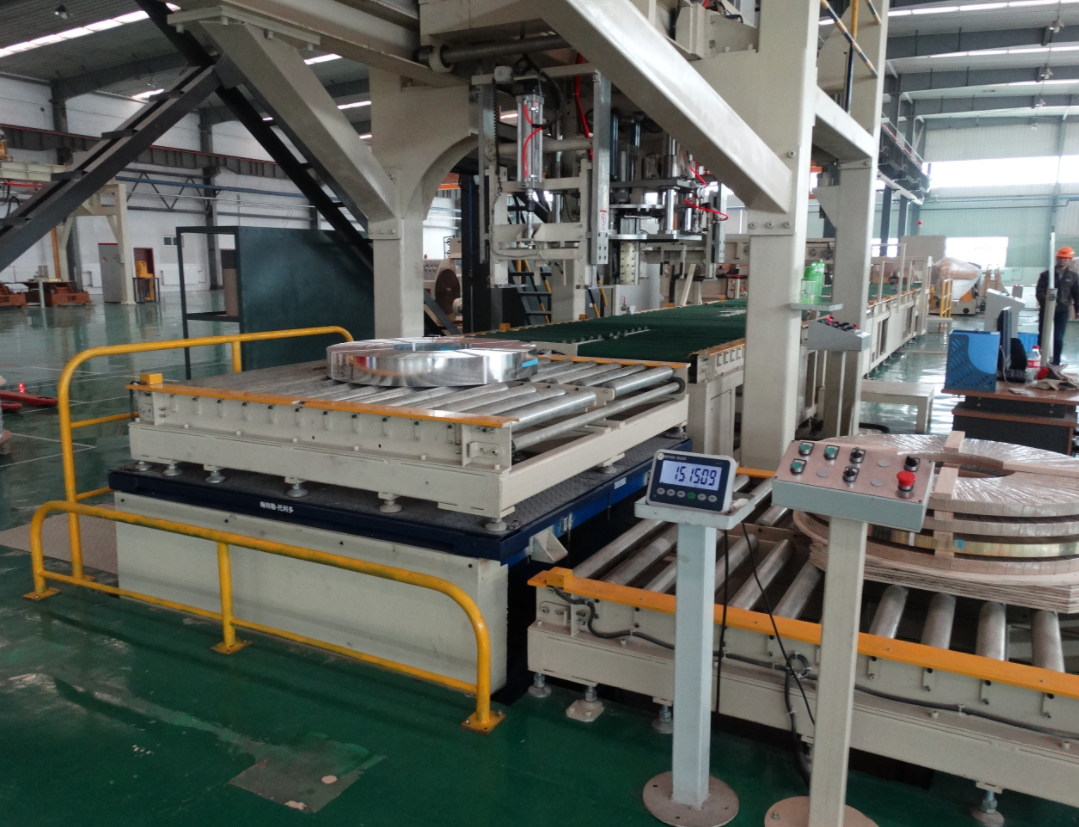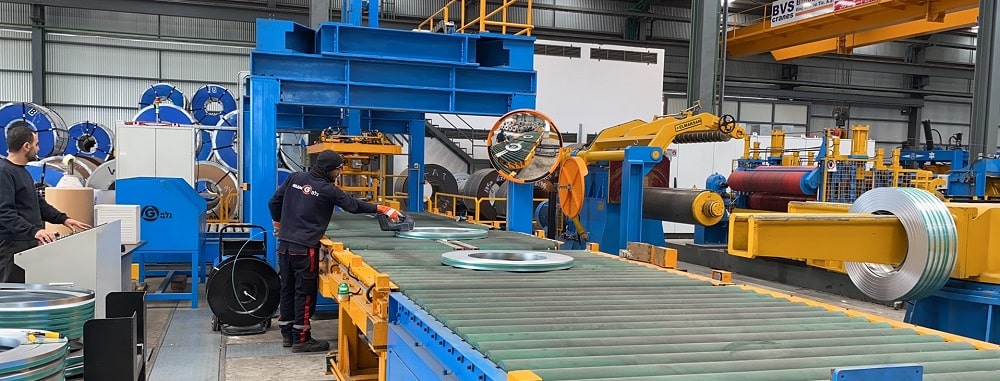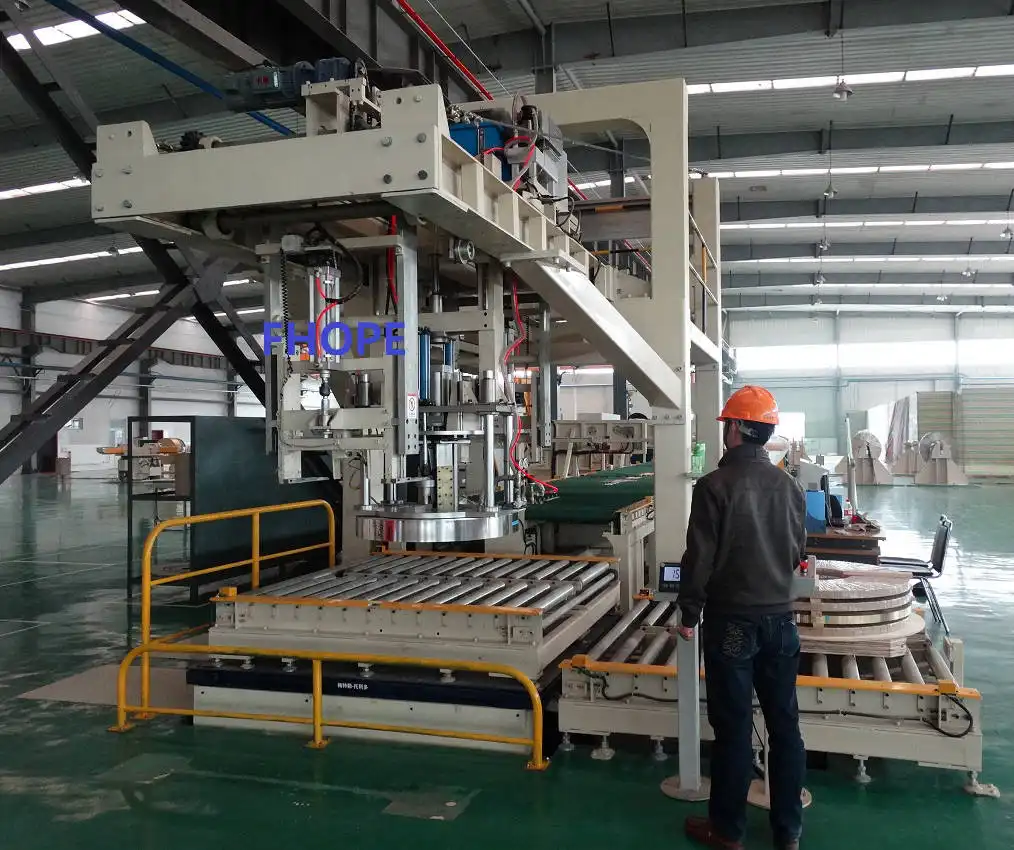Are you a factory manager, like Michael, constantly worried about your packaging line? You know that even a small breakdown can cause huge problems. Delays in production mean delayed shipments to your customers. This can damage your company's reputation and lead to lost orders. The pressure to keep everything running smoothly is immense, especially in a high-demand environment like the Indian steel market. You feel stuck between pushing for more output and the constant risk of equipment failure.
The best maintenance practices for keeping a slit coil packaging line running involve a consistent blend of preventive, predictive, and operator-led care. This means performing daily visual inspections and cleaning, following a strict weekly and monthly lubrication and mechanical check schedule, and training operators to spot early signs of trouble like unusual noises or vibrations. This proactive approach prevents small issues from becoming major, costly breakdowns.

These core ideas are just the beginning. I understand you're not just looking for a simple checklist. You want to understand the why behind each action. You want to see how these practices translate into real-world results: higher efficiency, better safety, and a stronger bottom line. In my years of building my own factory and helping clients like you, I've learned what truly works. Let’s dive deeper into the specific, practical steps that will make your packaging line a reliable asset, not a constant worry.
What Daily and Weekly Checks Are Non-Negotiable for Your Packaging Line?
You come into the factory, and your main goal is to meet the day's production target. It's easy to think that stopping the line for checks is a waste of time. But then, a sensor fails or a belt snaps without warning. The entire line grinds to a halt. Now you are facing hours of unplanned downtime, which is far more costly than a few minutes of inspection. It’s a frustrating cycle that many managers face.
The most critical, non-negotiable checks are daily visual inspections of sensors, safety guards, and pneumatic systems, along with a weekly check of belt tension, chain lubrication, and the tightening of critical bolts and fasteners. These simple, quick routines catch over 80% of potential failure points before they can stop your production.

Let's break this down into a practical system. I have seen firsthand how a simple checklist can transform a reactive, chaotic maintenance culture into a proactive, predictable one. A client of mine, a manager very similar to Michael, was struggling with frequent, small stops on his line. He felt he was always putting out fires. We implemented a simple but strict daily and weekly check routine, and within a month, his unplanned downtime dropped by more than half. The key is consistency.
The Power of the Daily Walk-Through
This isn't just a casual stroll. The operator or a dedicated maintenance person should perform this check at the start of every shift. It's the first line of defense.
- Visual Inspection: Look for anything out of the ordinary. Are there any loose wires? Is there any sign of a fluid leak? Are all safety guards in place and functioning? This simple visual scan can prevent serious safety incidents and electrical faults. For a manager like Michael, who is deeply concerned about worker safety, this is the easiest and most effective way to reduce risk.
- Sensor Check: The eyes and ears of your automated line are its sensors. Are the photoelectric sensors clean? Are proximity switches in their correct position? A dirty sensor can cause the machine to misread a coil's position, leading to a jam or improper wrapping. This directly addresses the problem of product damage, as a well-aligned wrap protects those delicate coil edges.
- Pneumatic System: Check the air pressure gauges. They should be within the recommended range. Listen for any hissing sounds, which indicate an air leak. Low air pressure can lead to weak clamping or slow cylinder movements, reducing the efficiency of your entire packaging cycle.
The Essential Weekly Review
The weekly check is a bit more hands-on. It focuses on parts that experience wear and tear from continuous operation.
| Check Area | Action Required | Why It's Critical |
|---|---|---|
| Drive Belts & Chains | Check tension. It should not be too loose or too tight. Listen for squealing or grinding noises. | A loose belt can slip, causing inconsistent speeds. A tight belt puts stress on motors and bearings, leading to premature failure. This directly impacts line efficiency. |
| Fasteners & Bolts | Manually check critical bolts, especially on moving parts like rollers and wrapping arms. | Vibrations from the machine can cause bolts to loosen over time. A loose bolt can lead to misalignment, product damage, or a catastrophic mechanical failure. |
| Emergency Stops | Physically press every E-stop button on the line. | You must be 100% certain that safety systems work. This is not just for compliance; it's about protecting your people. It addresses Michael's goal of improving workplace safety head-on. |
| Machine Guards | Ensure all guards are securely fastened and that any interlock switches are working correctly. | This prevents accidental contact with moving parts, which is a primary cause of serious injuries in a factory setting. |
By making these checks a non-negotiable part of your factory's rhythm, you shift from fighting fires to preventing them. This builds a culture of reliability and shows your team that you value both production and their safety. It's a foundational step toward achieving the operational excellence you're looking for.
How Does Lubrication and Cleaning Impact Machine Lifespan and Performance?
Many factory managers see cleaning and lubrication as low-skill, low-priority tasks. They focus on the big mechanical and electrical systems. But in the dusty, demanding environment of a steel processing plant, dirt and friction are silent killers of your equipment. A bearing that fails from lack of grease or a pneumatic valve that sticks because of grime can shut down your entire line, costing you thousands in lost production over a part that costs just a few dollars.
Proper, scheduled lubrication and regular cleaning are two of the most effective strategies for maximizing machine lifespan and ensuring consistent performance. Lubrication reduces friction, which minimizes wear and heat buildup on critical moving parts like bearings and chains. Cleaning prevents the accumulation of dust and debris that can interfere with sensors, clog cooling fans, and contaminate pneumatic systems.

Think of it this way: you wouldn't run your car's engine without oil. Your packaging machinery is no different. I once visited a factory in India where the manager was complaining about the wrapping arm on his machine being slow and jerky. The supplier told him the motor was probably failing. But before ordering an expensive new motor, I asked to see their maintenance logs. There were none for lubrication. We spent an hour cleaning the main ring and properly greasing the support rollers. The machine immediately ran like new. The problem wasn't a failed motor; it was neglect. This is a perfect example of how focusing on the basics saves money and prevents unnecessary downtime.
A Structured Approach to Lubrication
A "lubricate when it squeaks" approach is a recipe for disaster. You need a schedule. Partner with your equipment supplier, like us at SHJLPACK, to get a lubrication chart for your specific machine.
- What to Lubricate: The chart will specify every lubrication point. This includes bearings, chains, gears, and sliding surfaces on the wrapping ring, conveyors, and upenders.
- What to Use: Using the wrong type of grease or oil can be as bad as using none at all. High-speed bearings need a different lubricant than low-speed chains. The manufacturer's recommendation is based on the speed, load, and operating temperature of each component.
- How Often: The schedule will define the frequency—daily, weekly, monthly. In a harsh environment like a steel plant, you may need to lubricate more frequently than the standard recommendation.
The Financial Case for Cleaning
Cleaning is not just about making the machine look good. It is a critical diagnostic and preventive tool.
| Area to Clean | Why It Matters for Performance & ROI |
|---|---|
| Sensors and Reflectors | Dust and grime on photoelectric sensors can cause them to fail to detect a coil. This leads to machine stops and packaging errors, causing product damage and wasted film. Cleaning is a zero-cost way to ensure accuracy. |
| Control Cabinets & Fans | Steel dust is conductive. If it builds up inside an electrical cabinet, it can cause a short circuit, destroying expensive components like PLCs or drives. Keeping cabinet filters clean ensures proper cooling, extending the life of your electronics. |
| Pneumatic Components | Dirt can get into solenoid valves and cylinders, causing them to stick or leak. This results in slow machine movements and reduced efficiency. A clean pneumatic system is a reliable one. |
| General Machine Frame | A clean machine makes it easier to spot problems. Oil leaks, cracked welds, or loose bolts are much more visible on a clean surface. It helps you catch problems early. |
For a manager like Michael, who needs to justify every expense with a clear Return on Investment (ROI), this is it. The cost of a few hours of labor for cleaning and lubrication is tiny compared to the cost of a single major breakdown. It reduces product loss, lowers the risk of expensive component failure, and directly contributes to a safer, more efficient production environment.
Why Should You Treat Your Operators as the First Line of Maintenance Defense?
There's a common belief in many factories that operators are just there to push buttons and load products. Maintenance is seen as a separate job for a separate team. This creates a dangerous gap. An operator might hear a new, strange noise from a machine but think, "That's not my job," and say nothing. Hours later, that small noise turns into a catastrophic bearing failure, shutting down production for an entire shift. The maintenance team is then blamed for not catching it, when the person who could have prevented it was standing right there.
Treating your machine operators as the first line of maintenance defense is the single most powerful and cost-effective strategy for improving equipment reliability. Operators are with the machine all day, every day. They know its normal sounds, speeds, and vibrations better than anyone. Training them to spot, report, and even fix small issues transforms them from passive users into engaged owners of the equipment.

This philosophy is at the core of how I built my own factory. I didn't want a wall between my production team and my maintenance team. I wanted a bridge. We invested time in training our operators not just on how to run the machine, but on how it works. We gave them a simple checklist for pre-shift inspections and, more importantly, we created a culture where reporting a small problem was seen as a success, not a complaint. This approach directly addresses Michael's goals. It improves safety because engaged operators are safer operators. It boosts efficiency because small problems get fixed before they become big ones. And it builds a stronger, more skilled workforce, which reduces employee turnover.
Autonomous Maintenance: Empowering Your Team
This concept is often called "Autonomous Maintenance." It doesn't mean your operators need to become expert mechanics. It means empowering them with the knowledge and authority to handle basic care.
- Cleaning as Inspection: Train your operators that cleaning is not just janitorial work. When they wipe down a section of the machine, they should be looking for leaks, loose parts, or cracks. This turns a simple task into a valuable inspection.
- Basic Lubrication: Show operators the key daily or weekly lubrication points they can handle themselves. This ensures these crucial tasks are never missed.
- Sensory Checks: Teach them to trust their senses.
- Listen: Is there a new squeak, rattle, or grinding sound?
- Look: Is a belt tracking to one side? Is a chain drooping?
- Feel: Is a motor running hotter than usual? (This should be done carefully and safely).
- Clear Reporting Process: Make it incredibly easy to report a problem. A simple tag system or a logbook next to the machine works well. The key is that management and maintenance must respond quickly to these reports. If an operator reports a problem and nothing happens, they will stop reporting.
The Long-Term Benefits of Operator Involvement
Investing in operator training has a powerful compounding effect on your business.
| Benefit | How It Helps a Manager Like Michael |
|---|---|
| Increased Uptime | Problems are identified and fixed when they are small, cheap, and fast to repair. This prevents the major, production-stopping failures that kill efficiency targets. |
| Improved Safety | An operator who understands the machine is more aware of its dangers. They are more likely to ensure guards are in place and follow safety procedures, directly reducing injury risks and insurance costs. |
| Lower Maintenance Costs | The professional maintenance team can focus on complex repairs and planned preventive maintenance, rather than constantly fighting small, preventable fires. Their time is used more effectively. |
| Higher Employee Morale | When you invest in your operators' skills and trust them with more responsibility, they become more engaged and motivated. This reduces turnover and builds a stronger, more resilient team. |
This is not about adding more work to your operators' day. It is about working smarter. It bridges the gap between running the machine and caring for the machine, creating a shared sense of ownership that is fundamental to building a truly efficient and reliable production line.
What Are My Core Beliefs on Predictive vs. Preventive Maintenance for Steel Mills?
As an engineer who has spent his life around these machines, first as an employee and then as a factory owner, I've seen many different approaches to maintenance. Some people follow the manufacturer's preventive maintenance schedule like a holy text. Others invest heavily in expensive predictive technologies like vibration analysis and thermal imaging, hoping technology will solve all their problems. The truth, especially in the tough environment of a steel mill, is that you need a practical blend of both, guided by experience.
My core belief is that for a slit coil packaging line, a strong foundation of preventive maintenance—the checks, cleaning, and lubrication we've discussed—is 80% of the battle. Predictive maintenance is the powerful 20% you use strategically on your most critical components. Relying only on one or the other is a mistake. Relying only on technology without a solid preventive foundation is like building a high-tech roof on a crumbling house.

I remember advising a large steel processor in India. They had invested in a sophisticated vibration monitoring system for their main wrapping ring motor. One day, the system sent an alert. The maintenance team spent half a day analyzing the data and preparing for a complex motor bearing replacement. While they were doing this, the line stopped. The cause? A simple, inexpensive conveyor roller bearing had seized because it hadn't been greased in months. They were so focused on the high-tech predictive data for the big motor that they completely neglected the low-tech preventive care for the rest of the line. This experience solidified my philosophy. You must master the basics first.
Finding the Right Balance
For a manager like Michael, who needs a clear ROI, the key is to apply the right strategy to the right component. You don't need thermal imaging for every motor on your line.
-
Preventive Maintenance (The 80%): This is your foundation. It's scheduled, it's routine, and it covers the entire machine.
- Applies to: Conveyor rollers, chains, sprockets, pneumatic cylinders, sensors, guards.
- Method: Time-based or usage-based checks and component replacements. (e.g., "Replace all conveyor belts every 2 years," or "Grease these points every 40 hours of operation.")
- Advantage: It's simple, predictable, and prevents the most common failures. It builds a strong maintenance culture.
-
Predictive Maintenance (The 20%): This is your specialized tool. It's condition-based monitoring used to predict failure on high-value, critical components where a surprise failure would be catastrophic.
- Applies to: The main wrapping ring drive motor, the main PLC, the gearbox for the primary conveyor.
- Method: Vibration analysis, oil analysis, thermal imaging.
- Advantage: It can detect subtle issues before they become serious, allowing you to plan for a repair during a scheduled shutdown instead of having it fail during production.
My Personal Advice for Michael
Based on your challenges, here is how I would approach it if I were your partner.
- Build the Foundation First: Before you invest in any new predictive tech, let's perfect your preventive maintenance plan. We'll create checklists, train your operators, and establish a rock-solid lubrication and cleaning schedule. This will solve your immediate efficiency and safety issues with very low investment.
- Identify True Critical Points: We will walk your line together and identify the 3-4 components whose failure would cause the most damage to your production schedule. These are your candidates for predictive maintenance.
- Start Simple: Don't buy a complex system. Start with a simple handheld thermal camera. Once a month, take temperature readings of your critical motors and bearings. Record the data. Over time, you'll learn what "normal" looks like. When you see a temperature start to creep up, you know you have a developing problem. This is a practical, low-cost entry into predictive maintenance.
- Trust Your People: The best predictive maintenance tool you have is an experienced operator or maintenance technician who can hear a change in the machine's sound. Listen to them. Encourage them. Their experience is more valuable than any sensor.
My journey from engineer to factory owner taught me that success isn't about having the most expensive tools. It's about using the right tools, and more importantly, building a strong, reliable system and culture. That is the total solution that solves problems for the long term.
Conclusion
Ultimately, keeping your slit coil packaging line running reliably depends on consistent, proactive care. Blending routine checks with smart, operator-led maintenance is the key to maximizing uptime and profitability.





